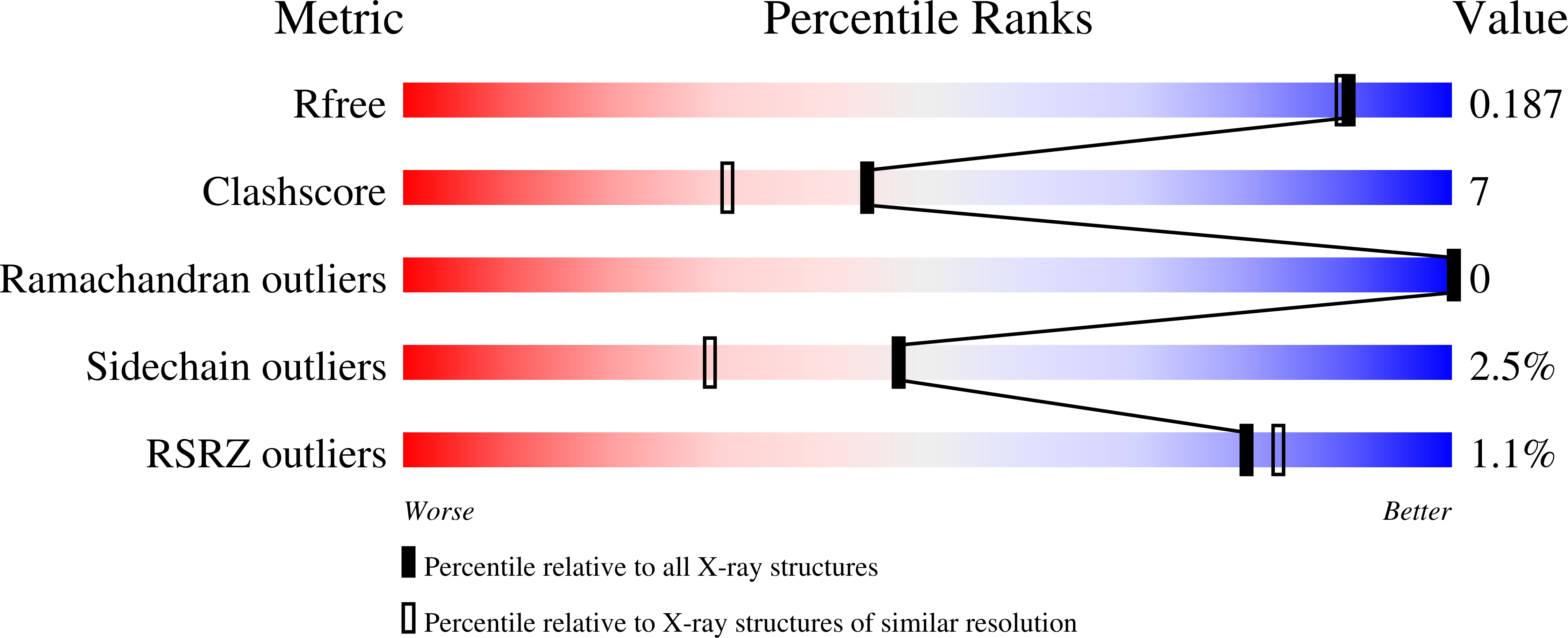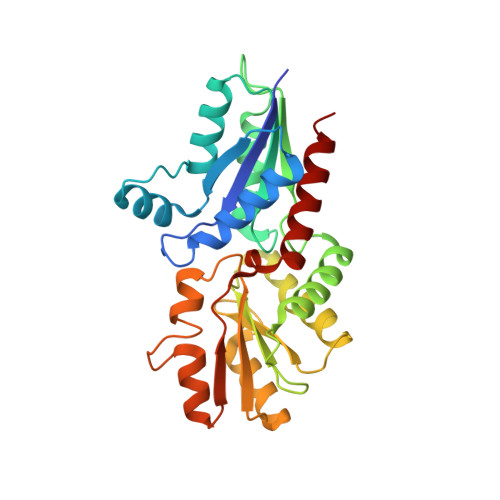Desulfovibrio vulgaris CbiK(P) cobaltochelatase: evolution of a haem binding protein orchestrated by the incorporation of two histidine residues.
Lobo, S.A., Videira, M.A., Pacheco, I., Wass, M.N., Warren, M.J., Teixeira, M., Matias, P.M., Romao, C.V., Saraiva, L.M.(2017) Environ Microbiol 19: 106-118
- PubMed: 27486032
- DOI: https://doi.org/10.1111/1462-2920.13479
- Primary Citation of Related Structures:
2XVY - PubMed Abstract:
The sulfate-reducing bacteria of the Desulfovibrio genus make three distinct modified tetrapyrroles, haem, sirohaem and adenosylcobamide, where sirohydrochlorin acts as the last common biosynthetic intermediate along the branched tetrapyrrole pathway. Intriguingly, D. vulgaris encodes two sirohydrochlorin chelatases, CbiK P and CbiK C , that insert cobalt/iron into the tetrapyrrole macrocycle but are thought to be distinctly located in the periplasm and cytoplasm respectively. Fusing GFP onto the C-terminus of CbiK P confirmed that the protein is transported to the periplasm. The structure-function relationship of CbiK P was studied by constructing eleven site-directed mutants and determining their chelatase activities, oligomeric status and haem binding abilities. Residues His154 and His216 were identified as essential for metal-chelation of sirohydrochlorin. The tetrameric form of the protein is stabilized by Arg54 and Glu76, which form hydrogen bonds between two subunits. His96 is responsible for the binding of two haem groups within the main central cavity of the tetramer. Unexpectedly, CbiK P is shown to bind two additional haem groups through interaction with His103. Thus, although still retaining cobaltochelatase activity, the presence of His96 and His103 in CbiK P , which are absent from all other known bacterial cobaltochelatases, has evolved CbiK P a new function as a haem binding protein permitting it to act as a potential haem chaperone or transporter.
Organizational Affiliation:
Instituto de Tecnologia Química e Biológica NOVA, Avenida da República (EAN), Oeiras, 2780-157, Portugal.
























